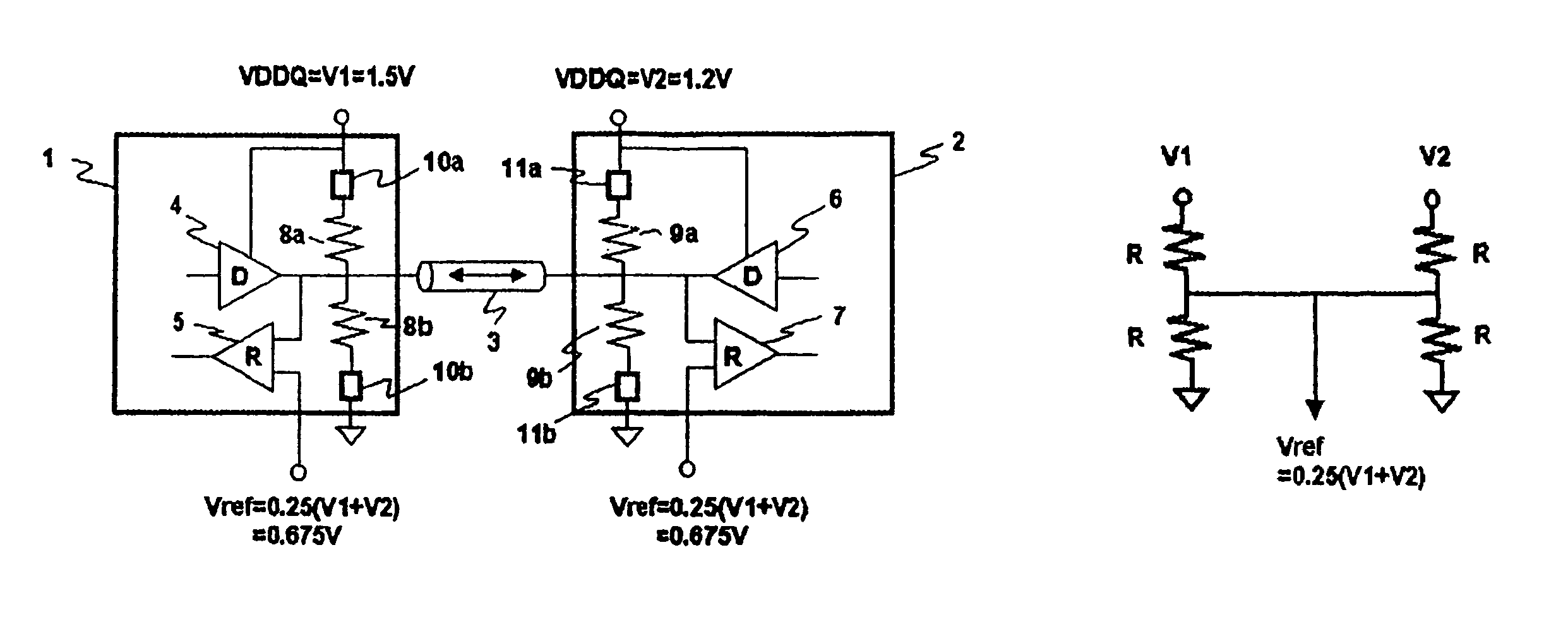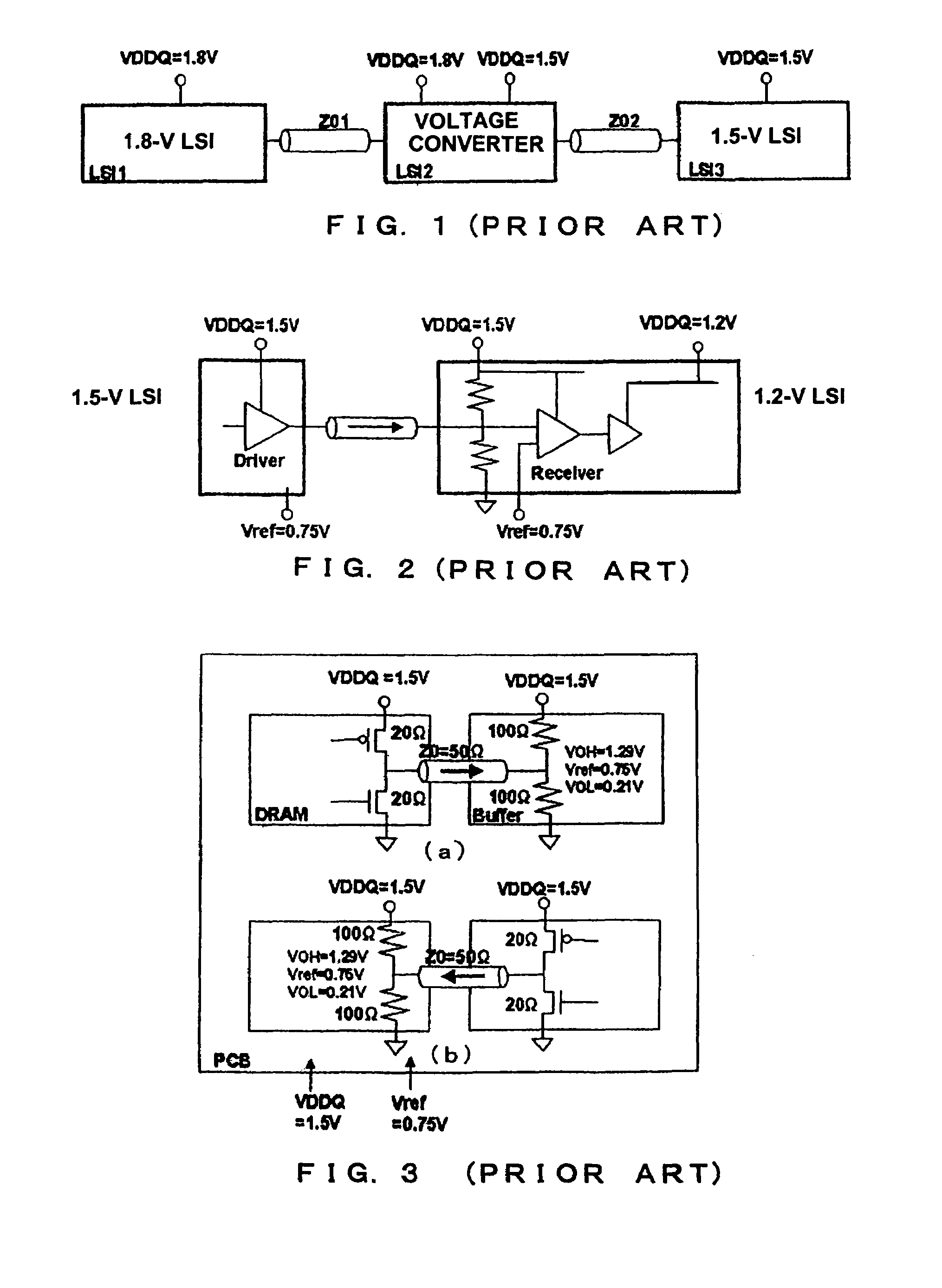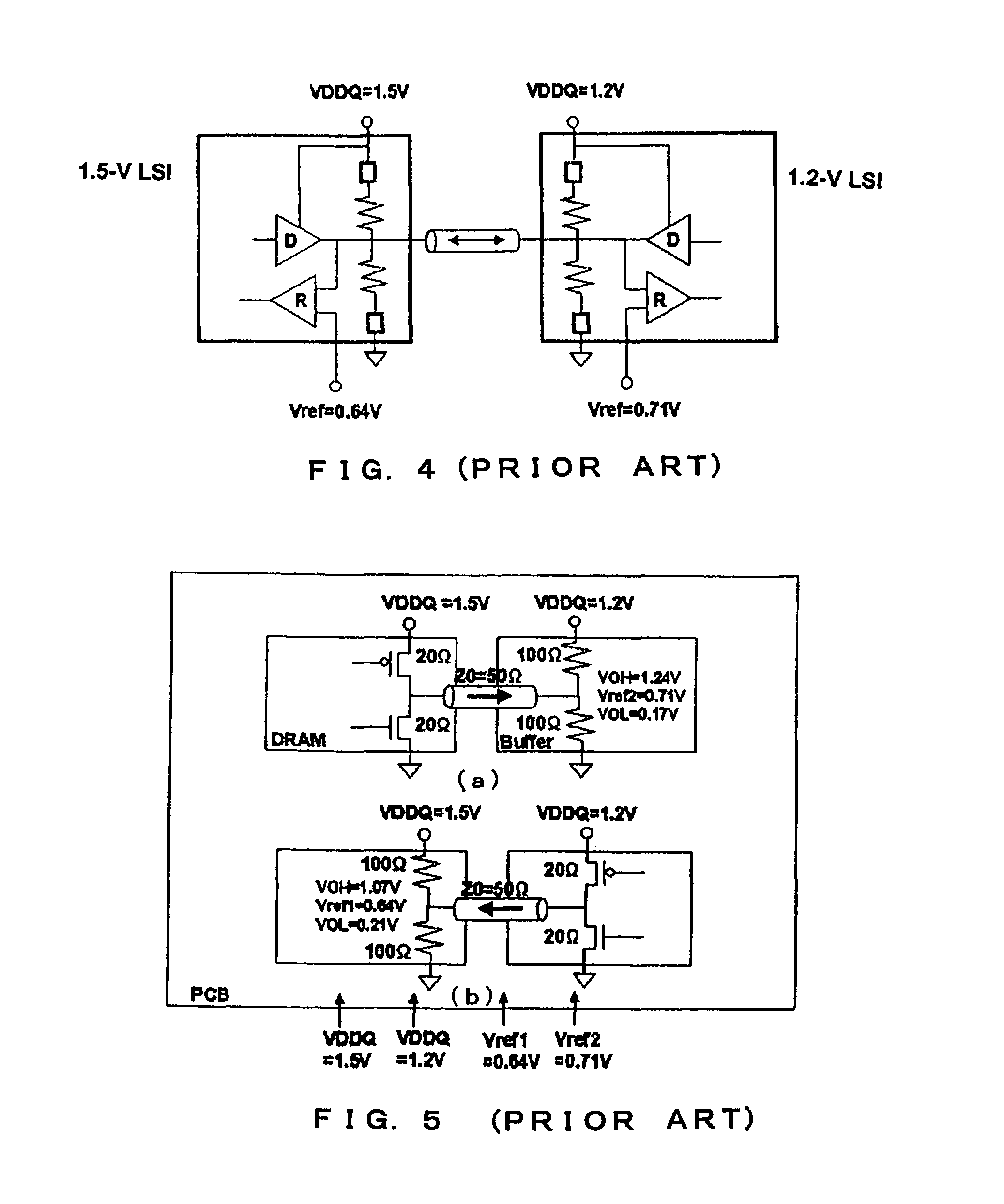Signal transmitting system
a transmission system and signal technology, applied in the direction of logic circuit coupling/interface arrangement, pulse technique, instruments, etc., can solve the problems of lsi fabrication process complexity, system performance lowering, and increased system cost, so as to prevent an increase in cost and suppress timing skew
- Summary
- Abstract
- Description
- Claims
- Application Information
AI Technical Summary
Benefits of technology
Problems solved by technology
Method used
Image
Examples
first embodiment
[0098]FIG. 10 is a circuit diagram of an arrangement of a signal transmission system according to the present invention.
[0099]FIG. 10 shows a specific example of the signal transmission system according to the first working example, for sending and receiving a single-ended signal. FIG. 10(a) shows an equivalent circuit for sending a signal from 1.5-V LSI 1 to 1.2-V LSI 2, and FIG. 10(b) shows an equivalent circuit for sending a signal from 1.2-V LSI 2 to 1.5-V LSI 1.
[0100]In FIG. 10, switches that are turned off, receivers, and drivers that are set to a high impedance state on the signal reception side that do not contribute to the values of potentials, are omitted from the illustration, and the resistances of switches that are turned on, are included in the values of resistors 8a, 8b, 9a and 9b.
[0101]The driver for sending a signal comprises a pMOS and an nMOS transistors which are push-pull-connected. Bidirectional bus 3 which is a transmission line has a characteristic impedance...
second embodiment
[0122]FIG. 13 is a circuit diagram of an arrangement of a signal transmission system according to the present invention. FIG. 13 shows a specific example of the signal transmission system according to the first working example, for sending and receiving a single-ended signal. FIG. 13(a) shows an equivalent circuit for sending a signal from 1.5-V LSI 1 to 1.2-V LSI 2, and FIG. 13(b) shows an equivalent circuit for sending a signal from 1.2-V LSI 2 to 1.5-V LSI 1.
[0123]In FIG. 13, switches that are turned off, receivers, and drivers that are set to a high impedance state on the signal reception side that do not contribute to the values of potentials, are omitted from the illustration, and the resistances of switches that are turned on, are included in the values of resistors 8a, 8b, 9a and 9b.
[0124]The driver for sending a signal comprises a pMOS and an nMOS transistors which are push-pull-connected. Bidirectional bus 3 which is a transmission line has a characteristic impedance Z0 o...
third embodiment
[0141]FIG. 15 is a circuit diagram of an arrangement of a signal transmission system according to the present invention. FIG. 15 shows a specific example of the signal transmission system according to the first working example, for sending and receiving a single-ended signal. FIG. 15(a) shows an equivalent circuit for sending a signal from 1.5-V LSI 1 to 1.2-V LSI 2, and FIG. 15(b) shows an equivalent circuit for sending a signal from 1.2-V LSI 2 to 1.5-V LSI 1.
[0142]In FIG. 15, switches that are turned off, receivers, and drivers that are set to a high impedance state on the signal reception side that do not contribute to the values of potentials, are omitted from the illustration, and the resistances of switches that are turned on, are included in the values of resistors 8a, 8b, 9a and 9b.
[0143]The driver for sending a signal comprises a pMOS and an nMOS transistors which are push-pull-connected. Bidirectional bus 3 which is a transmission line has a characteristic impedance Z0 o...
PUM
 Login to View More
Login to View More Abstract
Description
Claims
Application Information
 Login to View More
Login to View More - R&D
- Intellectual Property
- Life Sciences
- Materials
- Tech Scout
- Unparalleled Data Quality
- Higher Quality Content
- 60% Fewer Hallucinations
Browse by: Latest US Patents, China's latest patents, Technical Efficacy Thesaurus, Application Domain, Technology Topic, Popular Technical Reports.
© 2025 PatSnap. All rights reserved.Legal|Privacy policy|Modern Slavery Act Transparency Statement|Sitemap|About US| Contact US: help@patsnap.com



